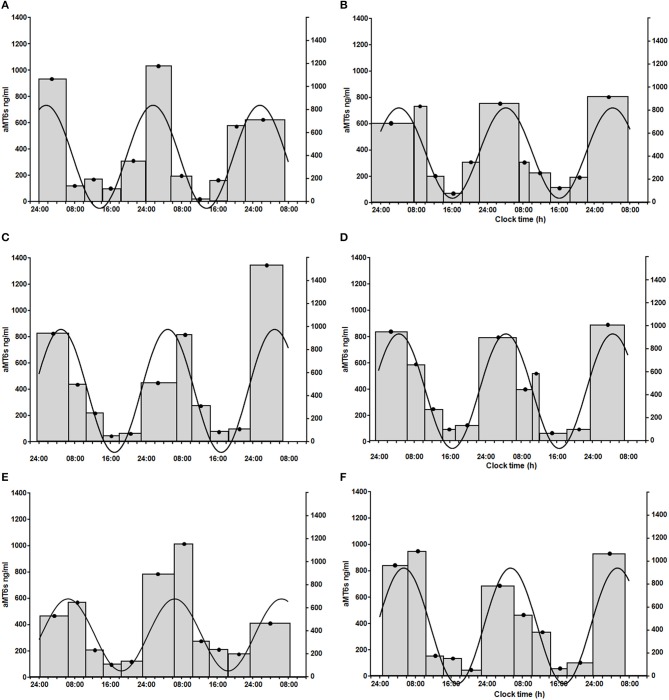Figure 4.
Sequential 56-h (three nights and 2 days) aMT6s excretion (ng/h, gray histograms, left y axis; width of the histogram = time between first and last bladder emptying over the collection period) in a healthy volunteer [female, 73 years of age; prior to (A) and after light administration (B)], a patient with primary biliary cholangitis [female, 65 years of age; prior to (C) and after light administration (D)], and a patient with cirrhosis [female, 50 years of age; prior to (E) and after light administration (F)]. Urinary aMT6s concentrations are high during night sleep and low during the waking day. Continuous line: fitted cosinor function, which shows the profile of urinary aMT6s concentrations over the 24-h period and allows calculation of a set of cosinor-derived aMT6s parameters (right y axis: amplitude of the cosinor fit in ng/h of aMT6s). In all three participants the cosinor fit was significant both at baseline and after light administration, the fit improving considerably after light administration. Healthy volunteer: % rhythm: 77; p = 0.003 at baseline (A) and % rhythm: 91; p < 0.0001 after light administration (B); patient with primary biliary cholangitis: % rhythm: 59; p = 0.028 at baseline (C) and % rhythm: 95; p < 0.0001 after light administration (D); patient with cirrhosis: % rhythm: 60; p = 0.026 at baseline (E) and % rhythm: 88; p < 0.001 after light administration (F).

